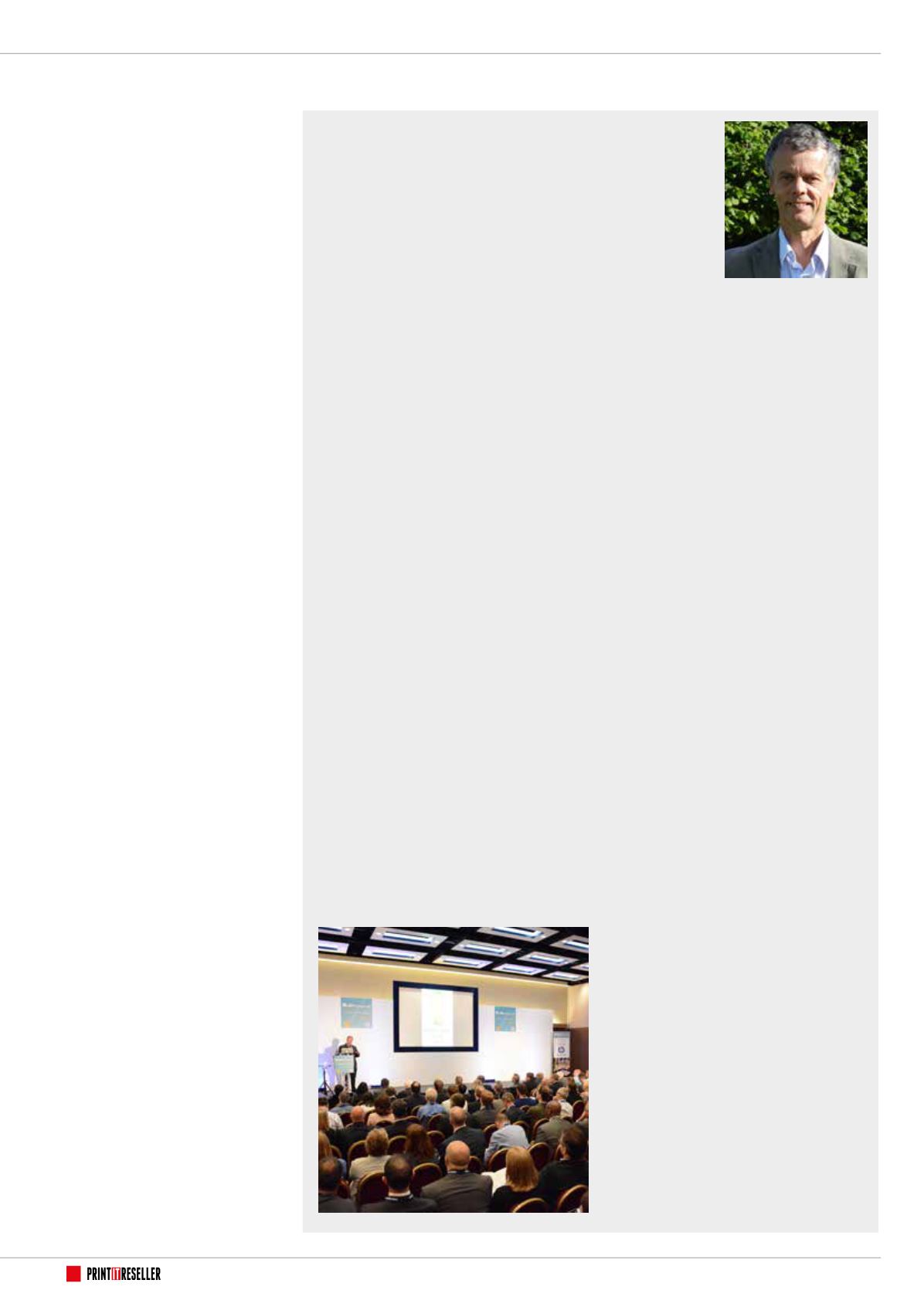
22
01732 759725
CONTENT MANAGEMENT
...continued
PITR
asks Doug Miles, Director of AIIM Market
Intelligence, why readers should attend
AIIM Forum UK 2015
PITR:
Who should attend the AIIM Forum UK?
Doug Miles:
The AIIM Forum covers both the
‘Why?’ and the ‘How to’ of information and content
management, and will prove useful to business
decision-makers, operations managers, technical
implementers and those who we might call
information stakeholders. Most departments run on
documents and content – HR, Finance, Procurement,
Operations, R & D, Legal – and so most business
managers need to understand how paper-free
processes can speed things up, how poor access and
isolated silos can slow things down, and how poor
practice in records-keeping and governance can get
you into trouble.
PITR
: Will visitors learn anything they don’t
already know?
Doug Miles:
Yes! The challenges of information
management haven’t changed, but the
opportunities from the latest capture automation,
cloud deployment, mobile access, analytics, case
management and smart business processes are
enormous.
PITR
: If information management is
continually evolving, what are some of the
main areas of interest in 2015?
Doug Miles:
Multi-channel capture and digital
mailroom are key solutions for those faced with big
in-bound customer communications. Automated
classification is taking over the filing task from
humans, and in doing so, cleaning up the redundant
‘dark data’ and improving searchability of the
rest. Content analytics plays its part here, but
can also feed big data initiatives to provide deep
business insight. Mobile access to content and
processes is hugely important, and the argument
rages between on-premise content management
systems and cloud-based collaboration platforms.
Meanwhile, information governance is emerging as a
combination of compliance, security and knowledge
value enhancement.
PITR
: What advice would you give someone
who knows they need to do something to
improve information management in their
organisation, but doesn’t know where
to start? How can they bring clarity and
relevance to the topic?
Doug Miles:
It’s important to identify that there are
two sides to information management: the risks and
the opportunities. Different businesses, and different
management teams, may be driven to act more by
one than the other, but taken together, the business
case can be greatly strengthened. Often there is a
win-win situation. Getting paper out of processes
and managing documents and forms electronically
will speed up response, improve searchability
and enable remote access, but it can also mould
compliance into the process and improve business
resilience. Providing defined collaboration tools and
content sharing within and outside the business
improves project outcomes, surfaces innovation
and reduces errors, but it can also support potential
litigation and manage IP security.
PITR
: Once they have registered to attend
AIIM UK Forum, what should visitors
do preparation-wise to ensure they get
maximum value from the event?
Doug Miles:
Go to the AIIM website at www.
aiim.org and take advantage of our many resources
and best practice guides. They are categorised by
business issues, not technical products. There are
also short tutorials and videos. We are also running
pre-conference training sessions on ECM and on
Information Governance the day before the Forum.
PITR
: If you were a visitor, what criteria
would you use to judge whether your time at
AIIM Forum UK had been well spent?
Doug Miles:
Business change and competitive
innovation require energy, commitment and above
all confidence. If what you see and hear at the
Forum strengthens your resolve to pursue change,
gives you some insight into the many possibilities for
improvement, and some business contacts to help
you start your journey, then your time there will have
been very well spent.
Why you should attend
the AIIM Forum
interaction capability.
Mancini says these findings point
to an industry in transition, driven,
like the broader technology space, by
developments in mobile, analytics, cloud
and collaborative technologies.
“There are still many organisations
that can benefit from more traditional
ECM solutions that automate document-
intensive processes,” he said. “But there
is also an explosion of content outside
the realm of these kinds of structured
processes, along with a revolution occurring
in how, where, and when knowledge
workers do their jobs. Even among the
current users of ECM technologies, 52%
believe that within five years, ECM systems
will be an undifferentiated part of the IT
infrastructure.”
ECM trends
A second new AIIM publication,
The
Content Management 2020: Thinking
Beyond ECM Trendscape Report
, based
on input from 56 senior executives in
companies like Microsoft, IBM, Adobe and
Box, highlights trends shaping the future of
content and information management.
Its analysis shows that the following
trends will be in play by 2020 and should
be at the top of enterprise technology
planning agendas now:
n
New approaches to privacy and security;
n
Ubiquitous broadband connectivity;
n
Bottom-up rather than top-down
innovation;
n
Lots more virtual and distributed work;
n
A shortage of ‘connective’ and analytic
skills among IT staff;
n
A shift in how technology is purchased
from multi-year capital expenditures to
current year operating expenditures; and
n
Increased regulation of the cloud by
national governments.
Mancini believes these trends will have
a significant impact on ECM, ushering in a
new era for the technology.
He said: “Organisations have always
wrestled with how to manage the
intersection of people, processes and
information, and over the past 15 years
we have called this set of technologies
Enterprise Content Management, or ECM.
But that time is almost over and we are
entering a new era of ‘ECM’ that will more
accurately reflect the changing landscape.”
The ECM Decisions report is free to
download at
ecmdecisions
. The
Content Management
2020: Thinking Beyond ECM
report is
free to download at


